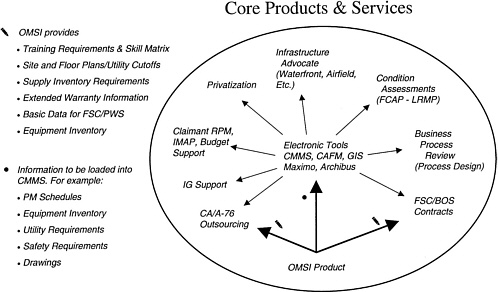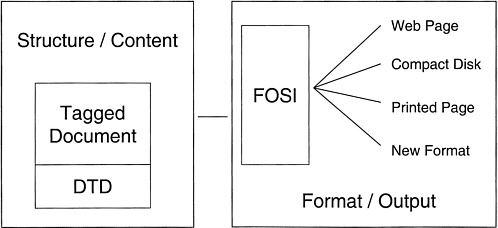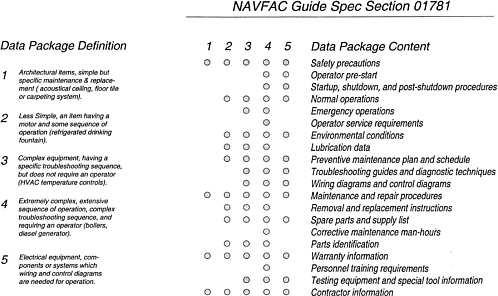4
Prototype Practice for the Building Industry: Operation and Maintenance Support Information
Mr. Eric Jackson
Industrial Engineer
Atlantic Division
Naval Facilities Engineering Command
The National Research Council report Stewardship of Federal Facilities: A Proactive Strategy for Managing the Nation's Public Assets notes that although construction cost is a substantial expense it is only the beginning of expenditures for a facility. Operation and maintenance account for 60 to 85 percent of life-cycle costs. Often, we are just focusing on the design and construction costs, but operation and maintenance are actually a much larger expenditure over a 30-year period.
Typically, buildings are designed to last at least 30 years. With proper maintenance and management, they can last from 40 to 100 years or more. The operation and maintenance cost of a building will inevitably increase over time because of age, wear and tear, and change of use. With maintenance and care, the service life of the facility can be extended beyond the initial estimate. However, if you do not deliver maintenance and repair at the appropriate time, you will actually irreversibly limit the service life of a facility. It is like putting oil in your car. If you do it on a regular basis, you will extend the life of that car. If you fail to do it, at some point the engine will fail and you will have to replace the engine or the car. The same can be said for facilities. If we maintain the facility and the systems in it, it will last longer than it was designed to. You will not have to worry about building a new facility.
Our admiral put it this way: “You can buy your way out of most design mistakes, but you will never be able to pay for any operation and maintenance mistakes.” Make sure things last for the design life.
In the past, when facilities were constructed, the construction contractors would submit bits of information about everything from doorknobs to major systems. When construction was finished, all of this information was put in boxes and given to the owners or whoever was taking care of the facilities.
Because the information was not organized, it was lost very quickly. Warranties were not maintained and were lost. This would affect the owner's business operations, because systems would go down and the right resources weren't available to fix them.
For the Navy, the NAVFAC would do a great job on building design and engineering. The construction contractor, engineering field division, and the facility user would all do a great job in the acquisition process. When it came to actually turning that facility over to the user, often that user was
left to maintain that facility. The user could not obtain help or the support that was needed from the acquisition team. Once the user took over that facility, he lost all support.
In 1988 a public works officer at the Naval Weapons Station in Yorktown, Virginia, refused receipt of a mine warfare building because the officer did not understand what was in that building. The officer did not know how to maintain the facility systems. So, ownership of the facility was refused.
Our organization decided not to let this happen again. Any time we turn over a facility, we are going to make sure that we have the documentation to support it. When an owner takes possession of a facility, the owner has the tools needed to operate it.
The obvious product is information, data that help the facility user and owner to effectively operate, maintain, and repair the facility as soon as they occupy it.
The concept is based on a 1981 article from the Construction Specifications Institute (CSI), “Preparation of an Operations and Maintenance Manual. ” It addressed the preparation of an Operations and Maintenance Support Information (OMSI) manual. This article stated that the manual should be completed by the designer, not the construction contractor. In addition, the manual should be based on as-built product data.
NAVFAC commissioned an architect-engineering (A&E) firm to review more than 100 contract technical specification sections to identify the type of information needed for equipment for each of those sections (see Figure 1.) Five different data packages were defined. One would be a very simple architectural, something that does not have any moving parts. Four would be the most complex system that requires an operator, has a sequence of operation, startup, and shutdown. Five is the special case of electrical equipment or other equipment for which the wiring diagrams or diagrammatic plans are needed.
NAVFAC guide specification 01781 identifies the data package that is to be provided with a piece of equipment (see Appendix D). It is clear to the construction contractors what information they need to provide with that piece of equipment when they install it.
This is the heart of the OMSI. Without this, it would be difficult to get the construction contractor to provide the information to the A&E firm in order to put together an OMSI. There is no question as to what information the construction contractor is to provide.
The CSI specification technical sections for the different pieces of equipment will identify data packages 2 through 16. The data package points back to the NAVFAC guide spec 01781 that specifically identifies data package 1, data package 2, data package 3, data package 4throughdata package 5.
All of this information is pulled together into an OMSI manual.
The manual is organized into three parts. Part 1, facility information, includes the facility and system description, design concepts, basis of design, basic data for facility support contracts and performance work statements, site and floor plan information, utility cutoffs, equipment inventory, supply inventory requirements, extended warranty information, training requirements, and a skills matrix. The public works officer can open the manual and actually find out what is going on at that facility very quickly. If we need to support this facility with a service contract or if we do not have the in-house resources to maintain the facility, we can contract it out. We also have the information in this manual to find out how many square feet of tile and carpet there are, as well as how many windows need to be cleaned without having to send someone out to inspect the facility. Any special training requirements for mechanics to maintain the facility are identified.
Part 2 of the OMSI manual contains primary systems information. The A&E firm develops operation, maintenance, and repair procedures for a given system from start to finish. Operation includes system descriptions, system flow diagrams, startup and shutdown procedures, and operating instructions. A mechanic can read this section and understand how this system works and how each component works to support the system. Maintenance includes lubrication schedules and preventive maintenance plans, schedules, and procedures. Repairs include troubleshooting guides and diagnostic techniques as well as repair procedures.

Figure 2. OMSI Benefits
Part 3 of the OMSI manual includes product data. It is a record of material and equipment organized by the CSI master format.
Typically, we have been providing the OMSI manual in hard copy, although in some special cases an electronic format has been used. Our goal is to move the OMSI manual into electronic format completely to enhance its availability and use. Often, when we produce an OMSI manual, we provide two copies. One copy goes to the customer, one goes into the facility, or to the service provider or public works. Generally, those would be under lock and key. If you want access to the manual, you would have to get the person who owns it to let you into the room. In contrast, if it is in an electronic format, it can be put on a local area network and then could be accessed by shop personnel.
Initially, we received a wide range of formats from the A&E firms. We conducted research to identify the best solution in terms of cost and labor. We decided on Adobe's Portable Document Format (PDF). It is an industry standard. In terms of costs, it is relatively inexpensive, around $300. It does not take a great deal of labor to implement.
The cost of OMSI manuals varies with facility cost and system complexity. For example, at the $5.5 million training facility at Oceana, the OMSI cost was 1.1 percent of the estimated cost of construction, or about $61,000. For a health care facility that cost $23.3 million, the OMSI cost was 1.7 percent, or $394,000. The difference is attributable to the complexity of the facility. A health care unit may have anywhere from 10 to 20 systems, whereas an administrative facility may have only 3 or 4. Generally, when we have a concept of design, we try to identify the OMSI cost up front so that part of the budget might be set aside.

Figure 3 SGML Tagging
OMSI accounts for only a small percentage of life-cycle cost. It is a good investment to help leverage greater expenditures on the facility. It also helps address issues such as commissioning, support contracts, and operating permits.
OMSI has many benefits. One document describes the original intent of the design so that subsequent modifications can remain consistent. OMSI provides an orderly compilation of all as-built product data. Repair responses can be completed more efficiently. It is possible to prepare more detailed and faster facility support contracts. It provides data for CMMS systems. OMSI reduces downtime, which results in improved mission readiness and satisfied customers.
OMSI also benefits the organization because it helps us provide better products for our other areas of business (see Figure 2). Finally, OMSI reduces operation and maintenance costs and saves money. What is next? Electronic delivery of operation and maintenance information directly from the manufacturer. The OMSI manual could be assembled dynamically. An intelligent system could identify itself to a local area network, connect to a manufacturer, and download the product information. It would be self-maintained. Smart facilities and smart systems would be self-diagnostic. It sounds very futuristic, but there are systems like this out there today.
How do we get there? Traditionally, when we think of documents, we think of something that is
hard bound. We turn the pages, we mark it up, we tear out the pages. Documents consist of three components: structure, content, and style.
However, if we define a document as a medium for disseminating information, we then can also say that any time information is being disseminated it represents some sort of documentation. The radio is a form of documentation. The television is a form of documentation, as well as the telephone, the dashboard of our automobiles or the cockpit of an aircraft. Like a fluid, as information flows into various shapes (mediums) it takes on the characteristics of that shape or medium. So as we make information intelligent we can customize that information into whatever format we desire.
SGML separates format from content and deals with the relationship between them. Documents can be divided into small elements. Each document type requires a specific Document Type Definition (DTD). An SGML document consists of a tagged document and its DTD. With those two components, a piece of software would know how to process this document, whether it is going to a printed medium or being received by a CMMS system (see Figure 3).
Using SGML has a number of advantages. The data are intelligent. The application and the system are independent. There is portability across various systems and applications. It provides flexibility beyond the traditional publishing of hard copies. The data have longevity: data do not need to be converted when new applications or technologies become available; conversely, SGML is reusable when existing applications or systems become obsolete. Documents can be assembled on the fly and can be sent out into various media without reentry or reformatting.







